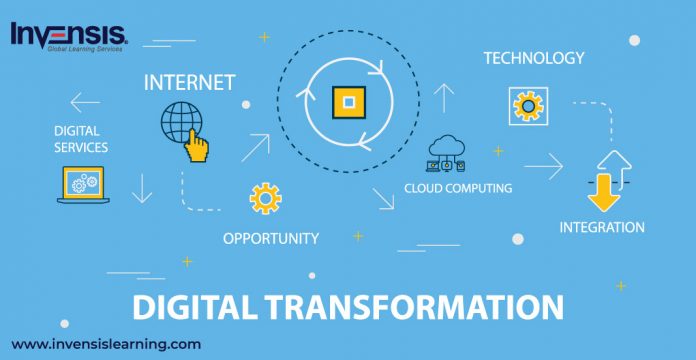
Do you know what digital transformation is, how companies achieve it, and what that means for ITSM? In the present era, digital transformation is spreading widely, and every firm is gearing up for a change. While transforming traditional ways to digital, many firms noticed that ITIL service management (ITSM) always implements change programs. This change plays a crucial role in the IT world. ITIL is not only a promoter but also a business in itself as it is expanding in every industry sector. Expanding a digital business requires not only a one-time investment but also ongoing digitization and revolution of business processes and software used to implement the business. So check out this blog, where you will attain extensive knowledge about how ITIL is supporting firms in their digital transformation.
What Do You Mean by ITIL?
The Information Technology Infrastructure Library (ITIL) is a framework for managing IT services that lists the best ways to provide IT services. ITIL’s systematic approach to ITSM can aid businesses in managing risk, improving customer relationships, setting up practices that save money, and building a stable IT environment that can grow, change, and scale.
The main objective of ITIL is for organizations to create predictable IT environments and give customers and clients the best service possible by streamlining processes and looking for ways to be more efficient. ITIL has always been about integrating IT into business, becoming increasingly important as technology becomes an important part of every business unit. ITIL 4, the recent version of the ITIL framework, keeps the original focus while emphasizing making the IT department more agile and flexible. The ITIL problem management process also looks into incidents that happen over and over again and their causes. It also has a formal focus on preventing incidents. In conclusion, without a formal way to handle problems, these tasks tend to disappear into a “black hole.”
What is Digital Transformation?
Digital transformation is the method of integrating digital technology into all parts of a business, which changes how you run your business and give customers value. The main advantages of digital transformation are increased efficiency, greater business agility, and, in the end, the release of new value for employees, customers, and shareholders.
Digital transformation takes a customer-driven, digital-first approach to all areas of a business, from its business models and customer experiences to its processes and operations. Moreover, it uses AI, automation, hybrid cloud, and other digital technologies to use data to drive intelligent workflows, faster and smarter decision-making, and real-time responses to market disruptions. And in the end, it changes what customers expect and opens up new business chances.
Top ITIL Benefits
ITIL is a framework for ITSM that is known worldwide. It has been shown to help businesses build and organize a solid IT management system while also ensuring that their IT services keep improving and providing good customer service. Following are the top benefits of ITIL:
Maintain a Strong Alignment Between IT and the Business
ITIL is unique because it brings together two departments whose interests rarely overlap: business and IT. IT is usually only concerned with resolving technical issues, but this is changing with ITIL. ITIL also aligns IT and business concerns, fostering better communication and a stronger commitment to service.
Increase Your Understanding of IT Costs
One of the other business-centric benefits of ITIL is the ability to reduce overhead costs. Without ITIL’s best practices, you may end up paying for software you do not require or incurring service costs. Furthermore, ITIL’s metric-based strategies help you stay within budget and provide the hard numbers you need to make important cost-cutting decisions.
Improve Customer Service and Service Quality
ITIL professionals are all about providing excellent service. ITIL’s best practices keep a company’s operating systems running smoothly so customers can have the best user experience possible. Furthermore, more specific subsets of ITIL, such as service-level management, assist businesses in understanding what customers have come to expect from them and acting accordingly.
Better Management of Business Risks and Interruptions in Service
All of these advantages of ITIL help organizations deal with risk. When IT and business are well-aligned, it’s less likely that something will slip through the cracks. One of the best things about ITIL is that its change, incident, and problem management processes are all geared toward preventing service outages and fixing them quickly if they do happen. By keeping these service interruptions to a minimum, teams can ensure that high-quality service is always available. Also, risks are lessened when teams work together, and there aren’t too many service outages.
Excellent Community
ITIL is so well-known that training and networking with other individuals and businesses make transitioning its practices to your organization easier. You will stand on the shoulders of thousands of organizations that have achieved service management success through the framework with the help of the ITIL community.
How Does ITIL Assist Businesses in Their Digital Transformation?
According to an Accenture Global survey, 26% of the companies are ready to implement digital strategies. Following are five ways that ITIL can help your organization speed up digital transformation. So, businesses should use these methods when looking for IT services.
Integrated Performance Management
Integrated Performance Management (IPM) creates a clear structure and set of links and interdependencies across all corporate performance management activity streams. The framework outlines the pieces of work mandatory to successfully execute the program in full alignment with the expected business outcomes.
IPM also entails aligning an organization’s approach to business management, its planning and reporting processes, its underlying data and systems, and establishing the environment and foundation for effective and efficient performance management and subsequent delivery of business outcomes and operational results.
Articulating Business Value
ITIL’s strategy focuses on managing the co-creation of services that are allowed to be provided proactively. It also includes planning for those services’ demands and all the necessary resources to fulfill that demand from the customer’s predicted business activity.
In ITIL, the result of a service strategy is a co-created service portfolio or catalog, made by service improvement or creative projects, and can be used for an internal business transition or by external service providers as a new market offering. The capabilities needed to support the business transition and operational delivery of the business processes. As a result, the portfolio of services includes strategic business goals and results that create value.
Infrastructure Service Management
Digital transformation means moving faster to deliver products and services, but it also needs ITSM to provide business governance, stability, and understanding. Here, ITSM professionals explain to organizations how services connect and how data is kept safe while allowing and supporting digital delivery. But the ITSM function also needs to show how well it understands business requirements and what plays a leading role for the organization and its customers.
ITSM framework gives the technology distributors the infrastructure they need to plan the IT services for an organization. Infrastructure service management not only helps service providers talk to each other but also helps coordinate the activities of the organizations that are in charge of data governance. Therefore, the conversation helps the suppliers, service desk, user services, applications, and consultants get along better. This improves service orchestration because ITIL’s basic principles are universally accepted principles covering all of an organization’s operations.
Integrated ITSM
The integrated ITSM framework in ITIL was launched to meet the requirements of an individual business and user context. Integrated ITSM changes the way different roles and tasks are done to fit the needs of each business. So, businesses can choose the best way to automate their processes to make them work better. Using the unified service capabilities of ITSM has several benefits because:
- Coordinate IT teams with business goals and keep an eye on them with measures of success
- Promote departmental cooperation
- Using the best practices for streamlined project management, bring the IT and development teams together
- Make the ITSM process more automated
- To support a culture that is focused on the customer, encourage self-service and better processes
User Experience Engineering
User experience engineering is an innovative idea that tries to bridge the gap between employees and customers when accessing systems like Enterprise Resource Planning (ERP) in larger companies. Customers can see how companies work on the inside. So even a three-second delay can hurt customer service. Moreover, user experience engineering takes advantage of how well the system’s internal processes work to improve the user experience.
Conclusion
In conclusion, transforming your legacy organization into its digital equivalent can be complex. However, the ITIL framework will help your organization transition from obsolete IT services to those that are highly sophisticated. In addition, the framework is flexible and adaptable, allowing you to adhere to a digital maturity roadmap.
As you all know, ITIL certifications set an international benchmark for your qualification and service management skills. So if you are looking for a high-quality certification, enroll with Invensis Learning ITIL 4 Foundation certification, where we’ll provide you with excellent training from accredited and experienced experts.
















